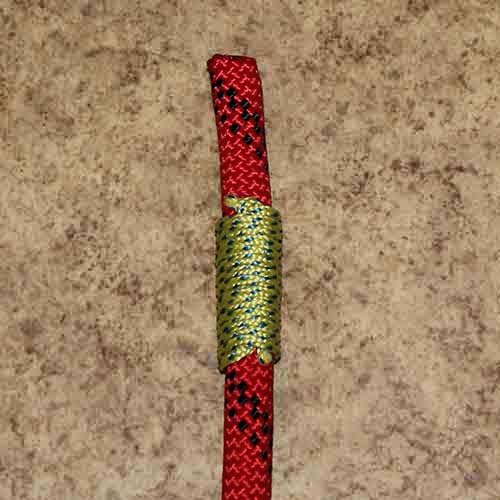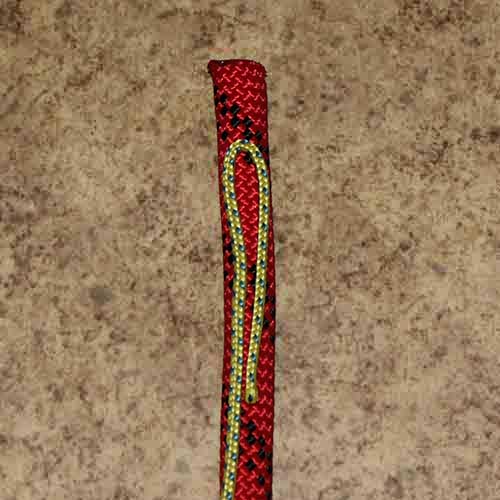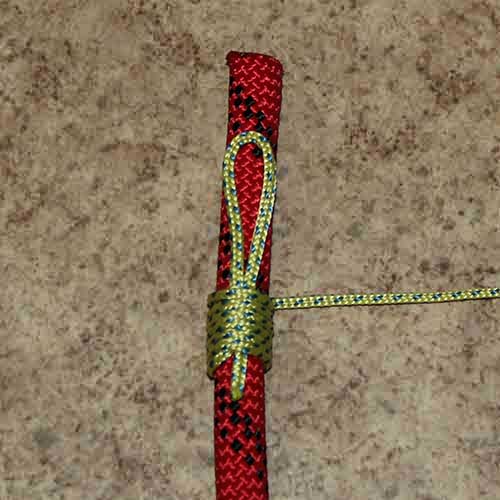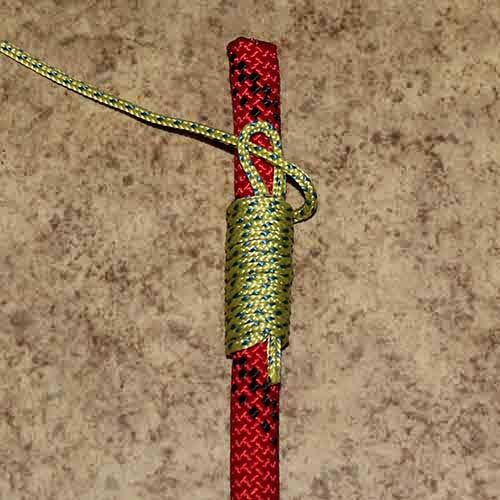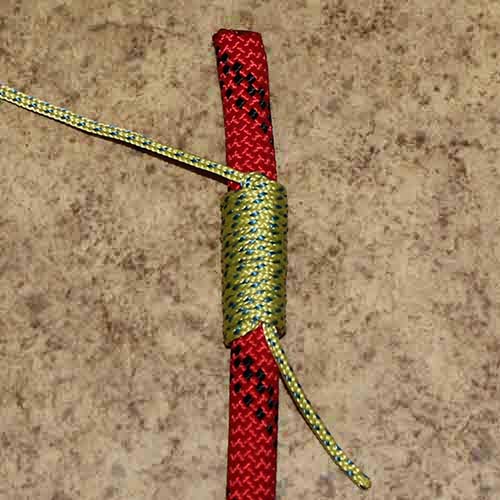Description
The common whipping is the simplest type of whipping knot, a series of knots intended to stop a rope from unravelling. As it can slip off the rope easily, the common whipping should not be used for rope ends that will be handled. This whipping knot is also called ‘wolf’ whipping in some parts of the world. The Hangman’s knot is a variation of this whipping knot.
Use
Used as a simple whipping knot the can be tied without needle. The problem is that it will slide off the end of the rope with little provocation. Other whippings avoid this by interleaving the whipping with the strands of the rope and creating friction with the strands to avoid slipping.
The knot is more suited for temporary use or on decorative ropes.
Security
Not very secure. Can slide off the end if the rope ends are handled. If one of the turns get cut the knot unravels easily.
Other names
Common whipping, Plain whipping, Ordinary whipping, Wolf whipping.
Tying
The rope should be whipped a short distance (one and a half times the diameter) from its end.
1. Lay a twine along the rope and make a bight back along the rope.
2. Begin wrapping the twine around the rope and bight of twine securely.
3. Wrap until the whipping is one and a half times wider than the rope is thick.
4. Slip the working end of the twine through the bight.
5. Carefully pull on the standing end of the twine until the bight and working end are pulled under the whipping.
6. Cut the twine flush with the edges of the whipping and the rope end not less than half its width from the whipping.

